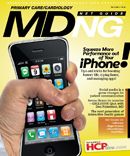Encouraging Healthy Media Habits for a Healthy New Year
Media exposure is a huge part of daily life today, with many families struggling with how to set reasonable boundaries. Studies have conï¬rmed that too much exposure to media for kids of all ages impacts behavior, health and lifestyle decisions, and buying choices, and it contributes to issues such as obesity, early sexuality, drug and alcohol use, and bullying.
Media exposure is a huge part of daily life today, with many families struggling with how to set reasonable boundaries. Studies have conï¬ rmed that too much exposure to media for kids of all ages impacts behavior, health and lifestyle decisions, and buying choices, and it contributes to issues such as obesity, early sexuality, drug and alcohol use, and bullying.
Encouraging your family (and your patients’ families) to complete a quick home inventory of their media habits is the best way to assess if a media exposure issue exists. Ask them to answer the following questions for each type of media:
- How many items in this category do we own?
- How much time each day do we use the items in this category?
- Do we know where the parent controls are for items in this category?
- Do items in this category have a rating system and are we following it?
- Do items in this category impact family time in any way or cause arguments?
Here are some resources and suggestions for each of the major media categories that can help you and your family make healthier choices.
Television: Parents should follow the current American Academy of Pediatrics (AAP) TV recommendations (http://tinyurl.com/2jl7x9). It’s important to recognize that TV time for families can be fantastic; encourage quality and thoughtful choices of shows, and point out that popular shows may not be as appropriate for certain age groups as parents may think.
DVDs and movies online: It’s important for parents to understand movie ratings and to select age-appropriate ï¬ lms. The MPAA ratings site (www.mpaa.org/FilmRatings.asp) is a terriï¬c resource.
TiVo/DVR: The Smart Television Alliance, in partnership with TiVo and several non-proï¬ t organizations, launched the Smart TV campaign (www.smarttelevisionalliance.org) to help parents select and record non-controversial, age- appropriate shows for their kids.
Music: The recent AAP statement on music and lyrics points out that negative music does have negative consequences on teen behavior (http://tinyurl.com/ye424ef). Remind parents that lyrics can be incredibly infl uential on how kids perceive themselves and behave toward others.
The Internet: Encourage parents to not only talk with their kids about their online activities but also to check the logs and monitor undesirable online interactions or visits to questionable sites.
Video games: Help families choose games that are appropriate for their kids in terms of content and intensity. The best resources for this are the ESRB ratings system (www.esrb.org/index-js.jsp), Get Game Smart (www.getgamesmart.com), and Common Sense Media (www.commonsensemedia.org).
Cell phones: Parents shouldn’t forget that cell phones are actually portable Internet devices. Remind them that kids can access the Internet and download applications from their phones and that these devices need to be monitored just like home computers.
Social networking sites and virtual worlds: Parents should be aware that their kids and teens may be interacting with people they don’t know through these sites, even on kid-friendly sites like Club Penguin (www.clubpenguin.com). It’s important that parents make sure their kids are the proper ages for the site in question and that their kids understand how to interact with others appropriately online, including when to seek input from an adult. The AAP offers social media tips that you can post for your families: www.aap.org/advocacy/releases/june09socialmedia.htm.
The best safety tool for kids is an engaged and attentive parent. Advise parents to get involved before installing monitoring tools. Here’s to a fantastic 2010, with just the right combination of plugged and unplugged time for our families and our patients’ families!
Gwenn Schurgin O’Keeffe, MD, FAAP, (aka “Dr. Gwenn”) is a pediatrician, health journalist, parenting and social media expert, and is CEO and Editor-In-Chief of Pediatrics Now (www.pediatricsnow.com), an online health and communications company dedicated to providing reliable information for today’s busy families. She also writes the blog Dr. Gwenn Is In (www.drgwennisin.com).
How do you use social media tools? Are you hesitant to get started or an avid tweeter? Share your thoughts, and send an e-mail to sjohnson@mdng.com.

2 Commerce Drive
Cranbury, NJ 08512
All rights reserved.